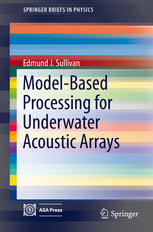

Most ebook files are in PDF format, so you can easily read them using various software such as Foxit Reader or directly on the Google Chrome browser.
Some ebook files are released by publishers in other formats such as .awz, .mobi, .epub, .fb2, etc. You may need to install specific software to read these formats on mobile/PC, such as Calibre.
Please read the tutorial at this link: https://ebookbell.com/faq
We offer FREE conversion to the popular formats you request; however, this may take some time. Therefore, right after payment, please email us, and we will try to provide the service as quickly as possible.
For some exceptional file formats or broken links (if any), please refrain from opening any disputes. Instead, email us first, and we will try to assist within a maximum of 6 hours.
EbookBell Team

4.3
38 reviewsThis monograph presents a unified approach to model-based processing for underwater acoustic arrays. The use of physical models in passive array processing is not a new idea, but it has been used on a case-by-case basis, and as such, lacks any unifying structure. This work views all such processing methods as estimation procedures, which then can be unified by treating them all as a form of joint estimation based on a Kalman-type recursive processor, which can be recursive either in space or time, depending on the application. This is done for three reasons. First, the Kalman filter provides a natural framework for the inclusion of physical models in a processing scheme. Second, it allows poorly known model parameters to be jointly estimated along with the quantities of interest. This is important, since in certain areas of array processing already in use, such as those based on matched-field processing, the so-called mismatch problem either degrades performance or, indeed, prevents any solution at all. Thirdly, such a unification provides a formal means of quantifying the performance improvement. The term model-based will be strictly defined as the use of physics-based models as a means of introducing a priori information. This leads naturally to viewing the method as a Bayesian processor. Short expositions of estimation theory and acoustic array theory are presented, followed by a presentation of the Kalman filter in its recursive estimator form. Examples of applications to localization, bearing estimation, range estimation and model parameter estimation are provided along with experimental results verifying the method. The book is sufficiently self-contained to serve as a guide for the application of model-based array processing for the practicing engineer.